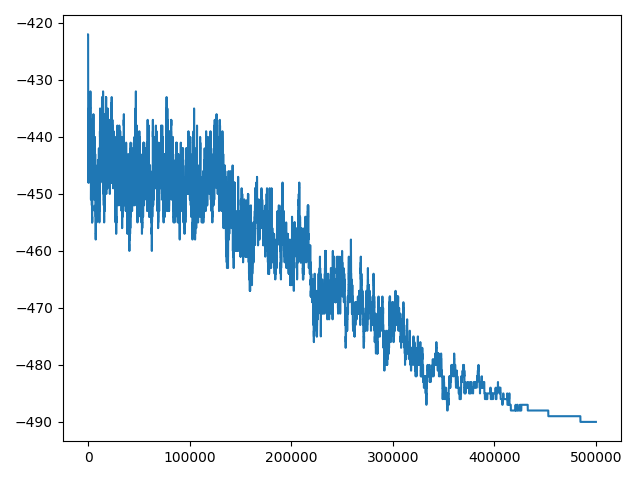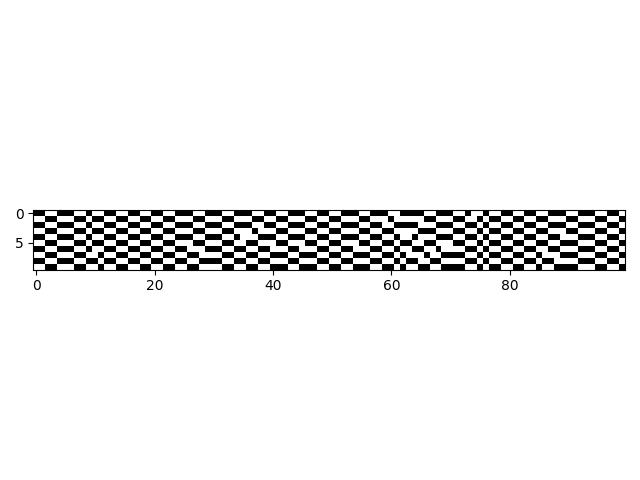Introduction
The Covid 19 pandemic has brought with it a complex set of restrictions regarding live events. E.g.:
- one can seat by people of the same social bubble,
- but must have a free seat at the top and bottom,
- and also two free seats to the sides.
What is the problem?
Given a set of already sold tickets to an event, we need to seat as many of them as possible, while respecting COVID guidelines.
Simple example - hello world
Applying the approach explained below, with the sample constraints explained in the introduction, to a standium of 1000 people, we can improve, the number of people which we can fit by about a +15% of the initial random guess.
In the plot below, it can be seen how the SA algorithm is much more conservative towards the end of the schedule budget, due to the exponential decay of the acceptance probability function.
How do we approach it?
We don't have a mathematical expression of some analytic function we can use to optimize. That is, if we figured out a scalar function which, given some parameters, returns the number of people we can fit, we could just derive it to find its global extrema. However, life is not this simple.
Brute forcing the problem could be a solution, but given a realistic situation (with a standard number of seats and attendees), it has an extremely huge search space.
However, we can approach the optimization through a metaheuristic method; we will be using Simulated Annealing.
Simulated annealing
Simulared annealing (SA) is a metaheuristic used to approximate a global optimization in a large search space. This fits exactly our needs! Also, it supports the use of discrete variables, which we will make us of. SA might be modeled as a random walk through a search graph of the initial guess and its neighbours.
SIMULATED ANNEALING ALGORITHS
Let S = S0.
Let k = MAX_K.
WHILE k >= 1:
Let S' = NEIGHBOUR(S).
Let T = (k + 1) / MAX_K.
IF UNIFORM_RANDOM(0, 1) <= P(S, S', T):
Let S = S'.
k--
S
The prior SA algorithm uses a fixed cooling schedule, but adptative solutions based on the change rate can also be designed.
This implies that we will also implement:
-
A function to get a neighbour of a solution, performing a small random mutation to the initial solution.
-
A cost function (a fitness function) to evaluate the cost of some solution. In our case, this could be simply a negative cost per person we can fit, and positive cost if that person is far from the family (e.g.).
-
A function which defines the probability of accepting a neighbour.
P(S, S', T) -> FLOAT: IF COST(S') < COST(S): RETURN 1 ELSE: RETURN EXP(-(COST(S')-COST(S))/T)

